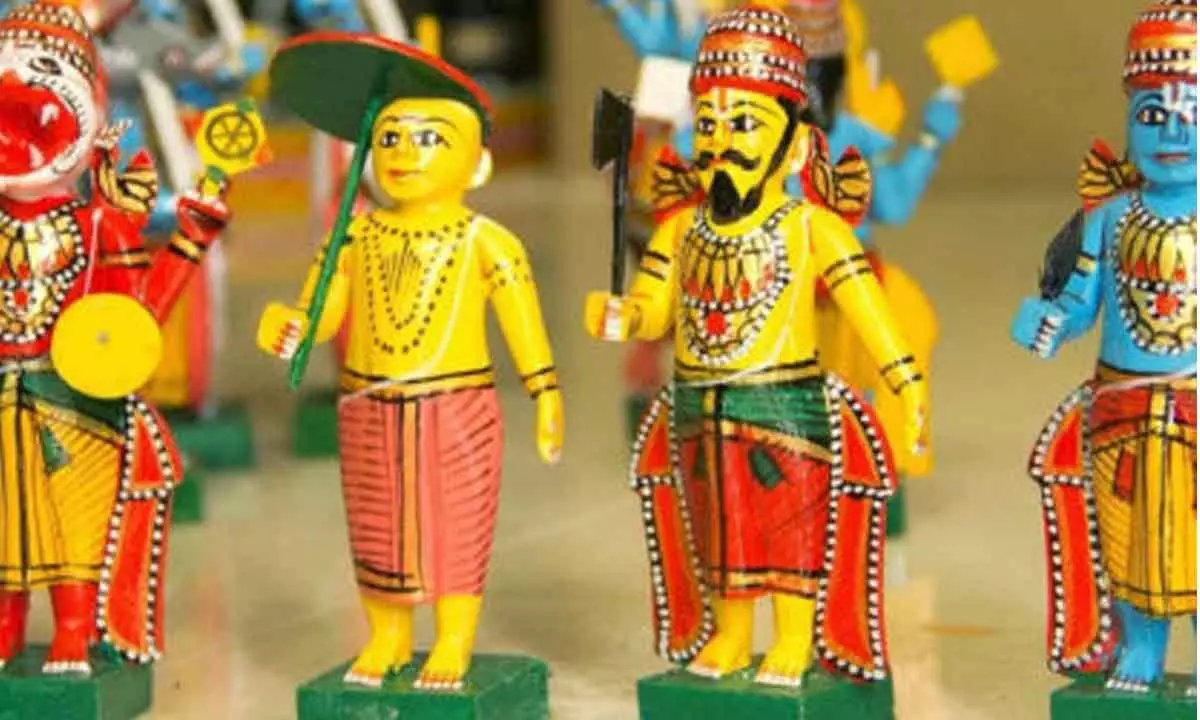Demand for 'made-in-India' toys on the rise
Government policies such as increasing customs duties on imported toys and mandating BIS certification requirement for imports not only boosted domestic manufacturing but also helped the industry to explore global markets and enhance exports.
image for illustrative purpose

New Delhi: Government policies such as increasing customs duties on imported toys and mandating BIS certification requirement for imports not only boosted domestic manufacturing but also helped the industry to explore global markets and enhance exports.
The demand for toys based on Indian mythological characters, desi movie characters and superheroes such as Chota Bheem are on the rise as the domestic players break away from the dominance of China and some other countries, according to industry experts. Now the 'made-in-India' toys have a very clear edge in the domestic markets and the manufacturers are scaling up their production capacity to meet the growing local as well as international demand.
The import of toys into India has declined sharply from $304 million in 2018-19 to $36 million in 2021-22, said a data from the Ministry of Commerce & Industry. On the other hand, exports have increased from $109 million in 2018-19 to $177 million in 2021-22, it added. According to the industry, the sector is also going global, as manufacturers are scouting new markets and increasing exports to the Middle East and African countries.
The Indian toy industry is growing as the government has mandated the domestic players to have BIS (Bureau of Indian Standards) certification for import and also increased customs duty, said Toy Association of India president Ajay Agarwal. "These are the two reasons as import of toys has declined," Agarwal said. Encouraged by these supporting initiatives, the Indian manufacturers are now scaling up their production and investing to augment their capacity, he added.
"Now several makers are manufacturing toys based on Indian ethos and culture. Icons like Chota Bheem are very popular and several manufacturers have the licence to manufacture them," he said, adding that more manufacturers are entering this category of toys. According to a joint report by industry body FICCI and KPMG, the Indian toy market was estimated to be around $1 billion in 2019-20 and is expected to double to $2 billion by 2024-25.
"Three years back 80 per cent of the toys were imported and the rest 20 per cent was from the domestic manufacturers but now the situation has changed," said Aggarwal, adding, "Imports have been reduced by 60 to 70 per cent and many players are only importing components and assembling the toy in India." Rajeev Batra, promotor of Panda International, said that the government's move to prohibit the sale of non-certified toys in the country played a "game changer" role in boosting domestic manufacturing and reducing imports from China.
"Two-three years back, about 80 per cent of the toys sold in the domestic markets were imported. Most of them were Chinese toys but after the introduction of BIS regulations, the scenario has changed. Now importing is not easy. We have started manufacturing here and exports also," Batra said. He said that the government's handholding is helping the industry to set up manufacturing units. The industry has suggested the government to introduce a production linked incentive scheme for the sector and a separate export promotion council for them.

